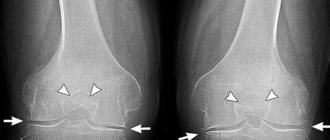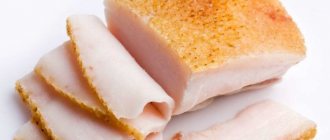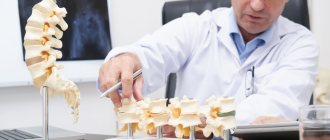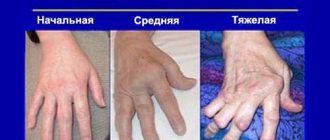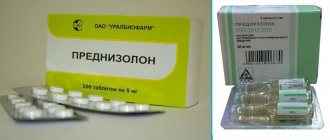Medical editor: Zemereva N.Yu., physiotherapist November, 2020
When one or more joints become inflamed and swollen, and movement in them becomes painful or impossible, we speak of a disease such as arthritis.
The causes of arthritis are varied; depending on the etiological factor, various forms of arthritis are distinguished:
- rheumatoid;
- gouty;
- reactive or inflammatory;
- psoriatic.
Proper nutrition plays a major role in the treatment of joint inflammation and helps alleviate the course of the disease.
The effect of drug therapy for RA on the body
Traditional treatment of rheumatoid arthritis of both types (seropositive and seronegative), in addition to basic drugs that have a delayed effect (at the choice of a rheumatologist, gold drugs, cytostatics, antimalarials, sulfonamides, D-penicillamine), includes painkillers and hormonal drugs, which have many side effects. Proper nutrition is aimed at minimizing the harm caused by medications. On the other hand, the task of a nutritionist when selecting a menu is to ensure that the patient receives the maximum of nutrients and to exclude foods that cause an exacerbation of the pathology (more on this below).
Groups of auxiliary drugs and their effect on the body of a patient with rheumatoid arthritis:
- non-steroidal anti-inflammatory drugs (NSAIDs);
- corticosteroids.
On the left is a stomach ulcer due to long-term use of NSAIDs, on the right is bone loss (osteoporosis) due to long-term hormonal therapy
Nonsteroidal anti-inflammatory drugs (NSAIDs)
Medicines in this group have a negative effect on the mucous membrane of the stomach and intestines, provoking an exacerbation of the patient’s existing gastritis, stomach or duodenal ulcers, or causing their appearance with long-term use. The diet of a patient with RA should include foods (meals) that would protect the gastrointestinal tract from such aggressive effects.
Corticosteroids
Hormonal drugs have a destructive effect on most organs and systems of the human body, especially with long-term use. However, if the patient’s arthritis activity is off the charts, such remedies cannot be avoided. In such a situation, proper and balanced nutrition comes first, helping in a number of cases (increased blood sugar levels, increased blood pressure, irritation of the gastric mucosa up to the appearance of ulcers, increased blood viscosity and increased risk of blood clots, decreased bone density) to minimize the negative impact of treatment.
On a note. Banana is a fruit that can replace most antacids (neutralize the effect of gastric juice). In addition, it contains a lot of potassium and carotene, which is good for the heart, which often suffers from rheumatoid arthritis, as well as other vitamins, macro- and microelements. A couple of bananas a day can, in a fairly short time, regulate blood pressure and sugar levels, improve mood and have a beneficial effect on the stomach. However, if the prothrombin index is high, eating them is not recommended.
Treatment of the disease
Patients are prescribed anti-inflammatory therapy with the following groups of drugs:
- non-steroidal – Ibuprom, Voltaren;
- corticosteroids – Prednisolone, Metipred;
- cytostatics – Methotrexate, Cyclophosphamide;
- antirheumatoid action - Arava, Sulfasalazine, Plaquenil;
- blockers of cytokines (inflammatory mediators) – Enbrel, Remicade.
Drug therapy can be supplemented by blood purification from immune complexes - plasmapheresis, plasma filtration, hemosorption.
What does the body of a RA patient require?
As a rule, basic therapy for rheumatoid arthritis is aimed at suppressing the patient’s overly strong immune system. Most often, the drug of choice for rheumatologists is Metatrexate. Despite good tolerance by patients and smoothed side effects against the background of a pronounced positive effect, damage is still caused to the body. In such a situation, it must be supported with nutrition - introduced into the diet:
- Diet for rheumatoid arthritis - allowed and prohibited foods, recipes with photos
- ascorbic acid (acts as a hormonal stabilizer, a strong antioxidant);
- bioflavonoids (reduce the permeability of the vascular wall, bind free radicals);
- Niacin (helps the stomach and strengthens blood vessels).
Ascorbic acid or vitamin C is found in Brussels sprouts, broccoli, bell peppers, rose hips, persimmons, sea buckthorn, jacket potatoes, peaches, apricots, fresh green peas, and sauerkraut.
Bioflavonoids of various types are found in the following products: bee propolis, medicinal herbs - tansy, cornflower, knotweed, St. John's wort, immortelle (maximum concentration in juice), berries - blueberries, red grapes (especially the skin), lingonberries, strawberries, blackberries. Green tea is also rich in them.
Niacin (niacin or vitamin B3) can be obtained from tuna, turkey and chicken meat, liver, sunflower seeds, legumes, mushrooms, wheat and buckwheat sprouts, and yeast.
On a note. Even knowing where what nutrients are found, it is difficult to create the right menu on your own. You should not experiment on yourself - seek help from a rheumatologist and nutritionist.
What is prohibited
Some foods may aggravate RA symptoms, causing persistent pain. They need to be excluded from the diet at least for a while until stable remission is achieved.
What not to eat:
- dairy products with a high percentage of fat;
- fat meat;
- spices;
- canned food;
- sweets, including honey (limit to the very minimum; sugar should be avoided altogether);
- alcoholic drinks;
- nuts;
- nightshades - potatoes, eggplants, tomatoes;
- citrus;
- salt (limit as much as possible).
On a note. In case of exacerbation, the products listed above should be completely removed from the diet.
What is allowed
If RA is in the active phase, all foods that could worsen the patient's condition are excluded. There is very little left in the diet that can be eaten without danger:
- chicken and quail eggs;
- skim cheese;
- rice or buckwheat porridge;
- fatty sea fish (salmon, trout, salmon), as a source of omega-3 polyunsaturated fatty acids and vitamin D;
- turkey meat;
- low-fat river fish (pike perch);
- vegetable soups (see list of excluded vegetables);
- barley drink;
- baked apples;
- rosehip decoction;
- greenery;
- 1% kefir;
- herbal or green tea.
On a note. The listed products contain a lot of protein, a minimum of fat and carbohydrates. It is forbidden to fry dishes from them. Stewing in a small amount of oil is allowed, but boiling or steaming is preferable. Salt is completely excluded. It is permissible to add a little salt to prepared dishes.
What do doctors recommend?
Therapeutic diet No. 10 or the Dong diet involves reducing calories (the patient should consume no more than 1800 kcal per day) and completely eliminating red meat. Fast (simple) carbohydrates are removed from the diet as much as possible, the amount of protein is also reduced (but not less than 90 g per day), because in a certain percentage of patients it causes an exacerbation of the condition, the amount of fats, especially animals, is reduced (in total no more than 70 g per day) .
In fact, the Dong diet suggests that for 10 days the patient will eat rice and stewed vegetables with a small addition of chicken or turkey. Not everyone is able to withstand such a meager menu, but to relieve the pain syndrome you will have to make every effort and not break down. In the future, the diet is expanded to include fish meat, rabbit meat, and eggs.
On a note. For rheumatoid arthritis, meals are split - 6 times a day, or more often. The main thing is not to go overboard in calories. If the patient is overweight, such a diet will help get rid of several kilograms without much effort - it is no coincidence that doctors recommend it to obese patients.
Fasting days
Sometimes you need to arrange fasting days
When changes in diet due to rheumatoid arthritis, diet and nutritional therapy should begin with a fasting day. This will help the body quickly switch to a new diet. A fasting day involves taking only juices and greens throughout the day. In this case, juices must be prepared with your own hands; store-bought products are excluded.
It is recommended to take both vegetable and fruit juices. In solid form, you can eat parsley or dill, fresh lettuce. Low-fat meat, fish or vegetable broths can be included in the diet.
It is recommended to arrange fasting days every 10 days.
Some doctors recommend therapeutic fasting, but it poses a real challenge to the body and is not suitable for everyone.
Strict diet for RA
An approximate daily menu for a patient with rheumatoid arthritis is as follows (options are possible for the days of the week from allowed products):
- Diet for knee arthritis. What foods are good and what are bad for arthrosis?
- Breakfast: 2 boiled eggs, 2 whole grain breads, 10 grams of butter, herbal tea without sugar.
- Second breakfast: cottage cheese casserole, baked apple, herbal tea.
- Lunch: vegetable soup with buckwheat, 1 standard steamed turkey cutlet with a side dish of boiled rice, vegetable salad of cucumber, lettuce and 1 tbsp. olive oil.
- Afternoon snack: berry pudding or 2-egg omelette, dried fruit compote with a minimum of sugar or fructose.
- Dinner: a palm-sized piece of trout, steamed, a couple of lettuce leaves, a few slices of cucumber, 2 tbsp. boiled rice with a drop of olive oil, zucchini stewed with vegetables (carrots, onions), a cup of green tea.
- Before bed: a glass of low-fat kefir or natural yogurt without additives.
On a note. When creating a menu, always follow your doctor's advice. Although the diet is limited, if you use your imagination, you can prepare many tasty and healthy dishes from the permitted products. After the disease enters the stage of remission, the menu is allowed to expand.
Knowing what kind of food is allowed for rheumatoid arthritis, the patient will always be able to control the condition of his body. When the acute period has passed, consult your doctor about expanding your diet. At this time, you can add fresh herbs, vegetables and fruits (which ones will be advised by a specialist).
We also recommend reading:
Content
Rheumatoid arthritis is a complex autoimmune joint pathology that leads to irreversible joint deformation and loss of motor function. This disease is chronic and cannot be completely cured. However, the correct therapeutic complex, selection of medications, diet and exercises for rheumatoid arthritis can stop the inflammatory process and degenerative destruction of joint tissue, as well as avoid exacerbations of the disease.
How does rheumatoid arthritis manifest?
Seropositive rheumatoid arthritis currently has no clearly defined causes, being a disease provoked by a complex of influencing factors. It has a number of symptoms affecting the joints of the hands and other organs, the severity of which depends on the stage of development and severity of the disease:
- joint pain, at rest and during exercise, muscle pain;
- the joint area is swollen, with skin hyperemia and a local rise in temperature;
- general condition weakened, increased sweating;
- morning stiffness;
- lymph nodes are enlarged and painful.
This disease is characterized by symmetrical damage to joints, both large ones - knees, elbows, and small joints of the hands. The joints of the hand are affected in 90% of cases. As the pathology develops, joint deformation occurs. In addition to joints, seropositive rheumatoid arthritis also affects the connective tissue of other organs and systems, which causes severe disruption of their functioning.
You can learn what rheumatoid arthritis is and how to treat it from the TV show “Live Healthy!”:
Dietary goals
The basis of treatment for this type of arthritis is the need to take anti-inflammatory and immunosuppressive drugs, physiotherapeutic procedures and physical therapy. The diet will help strengthen the quality of therapy and prolong the period of symptom relief.
By changing their diet, many patients suffering from rheumatoid joint pathology note a noticeable improvement in their general condition. The main objectives of the diet are:
- Normalization of metabolism and functioning of the gastrointestinal tract. Metabolic abnormalities are not directly related to the development of this type of arthritis, but their presence can lead to excess weight, as well as a lack of beneficial microelements and vitamins. As a result, the joints become less resistant to destruction and are subject to constant pressure due to excess body weight.
- Elimination of symptoms of inflammation. It has been proven that certain foods can increase joint swelling, pain and inflammation. Proper nutrition for rheumatoid arthritis not only reduces pain, eliminates swelling and swelling, but also prevents the development of new exacerbations.
- Enriching the body with calcium and vitamins. In the fight against immune pathology of the joints, it is necessary to pay special attention to strengthening them and restoring the protective function of the body.
Spices
- Ginger is known for its therapeutic properties due to the presence of pungent phenols such as shooaols and gingerols.
- Turmeric, rich in phenolic curcuminoids, has also been shown to have beneficial effects on several malignancies.
In study 19, a mixture of ginger and turmeric was administered to arthritic rats. This mixture showed protective effects against extra-articular complications of RA. Cinnamon Cinnamomum zeylanicum also reduces inflammation level 20.
General recommendations
The diet for different forms of arthritis has its own characteristics. This diet involves a balanced diet taking into account the needs of the body in the presence of a certain pathology:
- The diet is prescribed for therapeutic and preventive purposes, therefore general recommendations and nutritional direction are prescribed by a rheumatologist. It is not recommended to choose a diet on your own without the advice of doctors.
- Since rheumatoid arthritis is a chronic pathology, nutritional rules must be followed at all times. During the exacerbation phase, dietary measures will be more strict, while during the period of remission, you can slightly diversify the diet.
- The calorie content of daily food should not exceed 2500 kcal. During periods of exacerbation, this figure drops to 1500–2000 kcal. Meals should be divided into 4-5 times a day in small portions.
- The volume of fluid consumed during the period of remission should not exceed 2 liters of water per day, in the acute form of the disease - no more than 1.5 liters. This is due to an increase in synovial fluid in the lining of the joint, which intensifies the inflammatory process. You also need to take into account the liquid consumed in drinks and food.
- It is necessary to exclude or minimize the consumption of fast carbohydrates, animal proteins and fats. For autoimmune rheumatoid arthritis, the diet should be rich in complex carbohydrates, proteins and fats of plant origin.
- If a patient requires weight loss, fasting and rapid weight loss are strictly prohibited. Losing more than 4 kg per month will lead to serious metabolic disorders.
- Foods that trigger allergies should be identified and avoided. Experts note a direct connection between the allergic reaction and the exacerbation of rheumatoid inflammation. An elimination diet will help you determine the list of allergen foods. You need to make a list of suspected provocateurs and alternately exclude them from the diet for 1–2 weeks, and then introduce them for 1 day. If the appearance of unpleasant symptoms coincides with the consumption of a product, this is an allergen. To be sure, you can do the experiment again.
- It is necessary to limit the consumption of salt, as it retains excess fluid in the body. The daily norm should not exceed 5–8 grams. When calculating the amount of salt consumed, you need to take into account salt-containing foods.
- Attention should also be paid to the methods of preparing food. Eat boiled, baked and steamed foods. It is better to completely exclude fried foods.
Herbs
Synthetic drugs used in the treatment of arthritis are associated with numerous side effects, which in turn has led to attention towards drugs of botanical origin.
- Boswellia serrata is widely recommended as an anti-inflammatory herb,
- Withania somnifera is one of the powerful anti-inflammatory herbs, has shown 24 reductions in knee swelling index, pain, joint stiffness, and a significant reduction in WOMAC; Also, arthritic rats treated with root powder showed less bone collagen breakdown, and the aqueous extract significantly reduced stiffness, inability to move the knee and joints, and pain scores.
Prohibited Products
Dietary nutrition will be beneficial only if you completely remove from the diet foods that cannot be eaten with rheumatoid arthritis of the joints:
- white flour products;
- pickles and preserves;
- meat broths and any fatty meat, offal;
- semi-finished and smoked products;
- canned fish and meat;
- sauces, hot seasonings, mayonnaise and ketchup;
- salted, dried and smoked fish;
- nightshade vegetables (tomatoes, peppers, eggplants, pumpkin, potatoes);
- corn and wheat grits;
- full-fat milk and dairy products;
- sweets, chocolate, cocoa;
- alcohol.
Diet during exacerbation
The acute form of the disease requires strict adherence to avoidance of prohibited foods.
- Diet for rheumatoid arthritis - basic rules for successful treatment
Nutrition for rheumatoid arthritis during an exacerbation requires complete exclusion:
- gluten-containing products;
- Sahara;
- fatty meat products, liver and kidneys;
- fatty dairy products;
- allergenic products (citrus fruits, strawberries, tomatoes);
- juices, compotes, coffee and tea (due to limited fluid intake).
Synbiotics
Synbiotics consist of probiotics and prebiotics (non-digestible foods that support the growth of beneficial bacteria in the colon and promote health). Several reports have confirmed the reduction of oxidative stress in the human body through the consumption of synbiotics.
When yoghurts fermented with Lactobacillus rhamnosus GG (LGG) and L. bulgaricus were given to rats with arthritis, it significantly reduced clinical arthritis scores.
In a study, women with RA were given L. casei 01 capsules containing about 108 colony forming units (CFU)/capsule for 8 weeks. After treatment, there was a significant reduction in the number of tender and swollen joints, a disease activity score (DAS).
Gluten-free diet
Abstaining from foods containing a special grain protein - gluten, is recommended for people with cyalkia (individual gluten intolerance). The development of this pathology against the background of autoimmune arthritis was noted.
However, a study by nutritionists and arthrologists conducted between two groups of 66 patients suffering from rheumatoid joint inflammation proved a direct link between the effect of gluten on the symptoms of arthritis. It is worth noting that these patients did not have any signs of cyalkia. According to this study, patients on a gluten-free diet showed increased activity of antibodies that reduce inflammation.
A gluten-free diet for exacerbation of rheumatoid arthritis allows you to include the following foods in your diet:
- boiled eggs, omelettes;
- boiled lean meat and fish;
- baked goods made from soy and bean flour;
- rice and buckwheat porridge;
- rice cakes;
- vegetable soups and salads;
- low-fat kefir and cottage cheese;
- baked apples;
- fruits;
- rosehip drink.
In addition to grain products, you need to exclude products containing yeast, malt sugar, pasta, sauces, mayonnaise, and processed foods. When buying tea, instant coffee, kefir and other food products, you must carefully study the composition for gluten content.
Dong Diet
The American Dong diet is based on avoiding fatty foods, red meat and dairy products. The food system also limits the consumption of fruits and nightshade vegetables.
It is recommended to include in the weekly diet menu for rheumatoid arthritis:
- red fish;
- chicken's meat;
- rice;
- baked and boiled vegetables;
- olive oil;
- greenery.
The diet course lasts for two weeks. This strict diet is an excellent nutrition option during an exacerbation period. Once symptoms have eased, there is no need for such strict restrictions.
Pros and cons of the method
Diet No. 10P is well tolerated by the body and has only a positive effect on it.
But, like any restriction, the diet has advantages and disadvantages.
Pros:
- balanced, complete nutrition, suitable for long-term use;
- the list of permitted products is quite wide;
- The diet is not financially expensive, affordable, and easy to prepare.
The downside is that with a long-term diet, it is difficult for the patient to comply with the necessary fasting days. Getting into a diet, and getting out of it, is not easy.
This nutritional system has no contraindications . Before going on a diet, it is better to consult your doctor. This is especially true in the presence of concomitant (chronic) pathologies.
Vegetarian diet
A plant-based diet is also effective in reducing symptoms of arthritis flare-ups. This effect is achieved by avoiding animal fats and proteins, and switching to foods rich in complex carbohydrates and fiber.
It is worth noting that raw plant foods are a source of many vitamins, including groups B, C and P, necessary for the production of the anti-inflammatory hormone cortisol.
Sometimes the menu includes eggs and lean fish rich in Omega-3 acid, calcium and vitamin D. This helps strengthen joints and prevent their destruction.
A plant-based diet is effective for those who need to lose weight to relieve pressure on their joints.
Vegetarian raw and mono diets can reduce inflammation in rheumatoid arthritis, but it is not recommended to adhere to them constantly. It is better to resort to such nutrition on fasting days.
Principle 7: Eat with Gratitude
Rheumatoid arthritis, along with bronchial asthma and gastric ulcers, are diseases whose exacerbation can provoke stress and strong negative emotions.
The habit of eating with gratitude allows the patient to neutralize the effects of negative factors, because... In response to positive emotions, the body produces substances that have analgesic and anti-inflammatory properties. And a calm atmosphere promotes eating at a leisurely pace, which is extremely important and necessary for the stomach.
Diets during remission
During periods of remission, strict restrictions can be lifted. However, you should eat prohibited foods no more than several times a week in limited portions.
The following products can be added to the menu during remission of rheumatoid arthritis:
- bread made from rye flour;
- beef, veal and pork in small portions;
- offal;
- coffee, tea, freshly squeezed juices, compotes;
- pasta;
- nuts;
- boiled potatoes.
